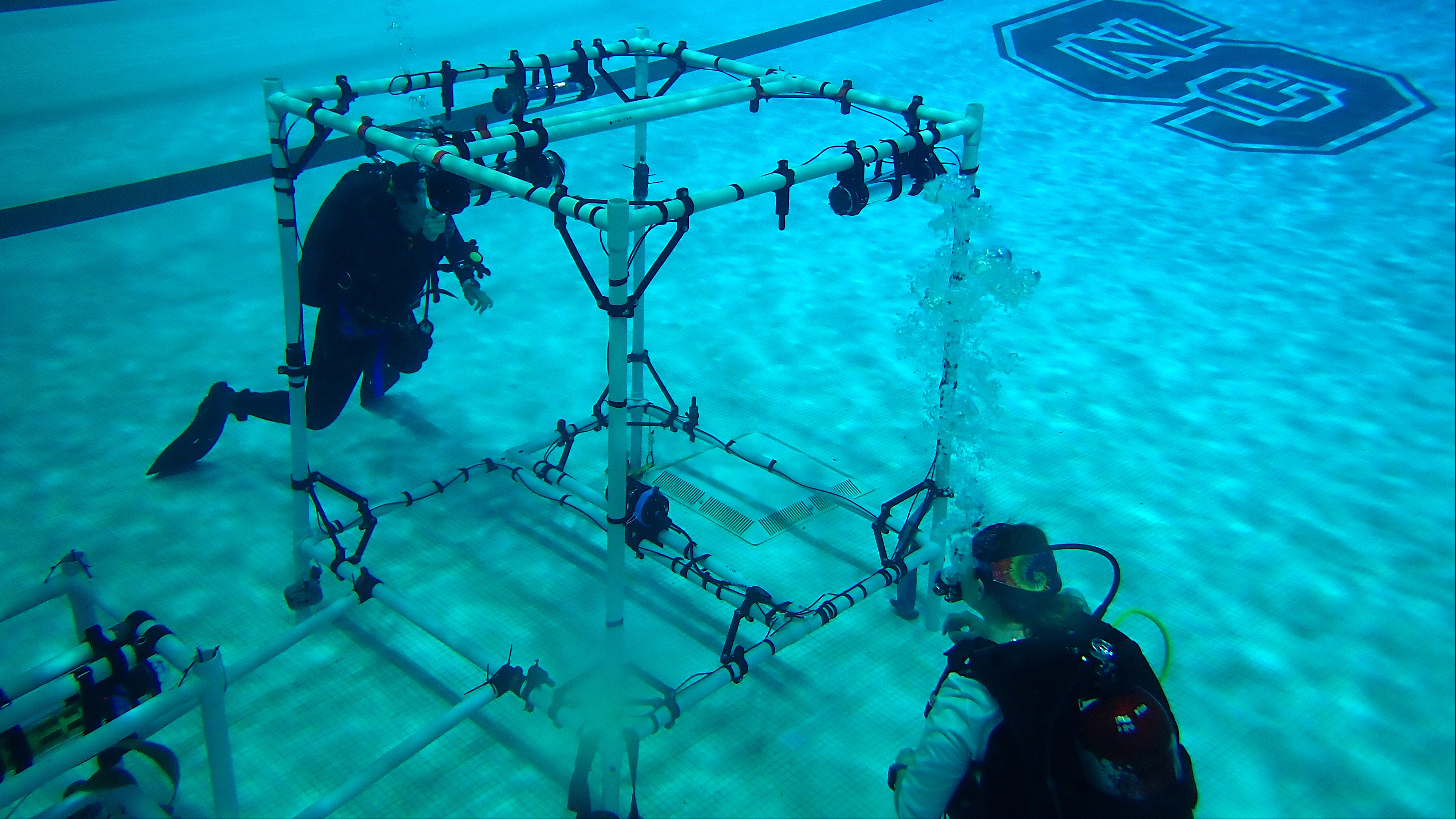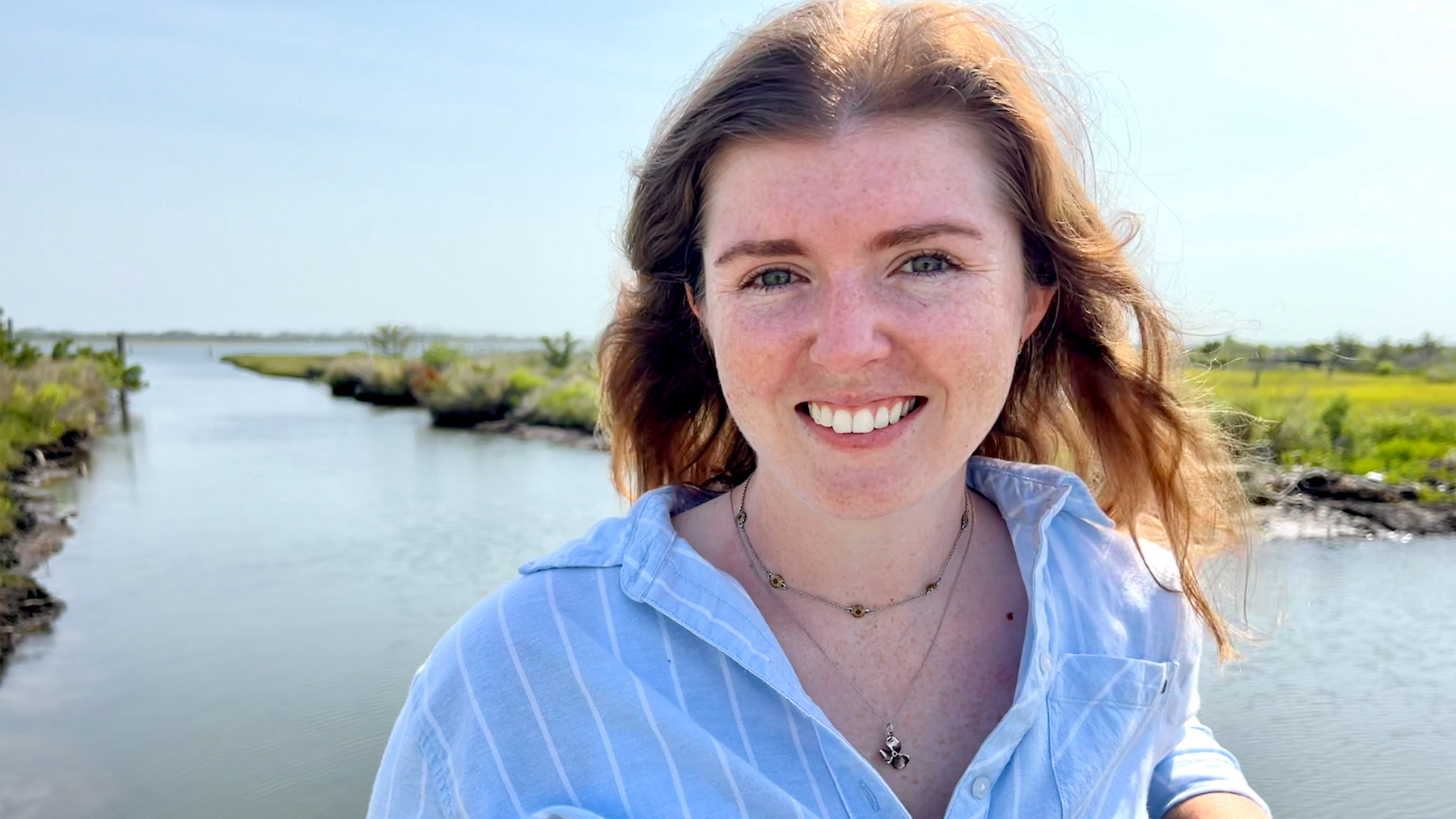NC State Builds Audio-visual Array to be Deployed in the Galápagos Islands

NC State Center for Marine Sciences and Technology (CMAST) research specialist Melissa LaCroce and PhD student Mikayla Carrier (pictured below, left to right) test a newly built audio-visual array (AVA) in a pool before it is deployed in the Galápagos Islands. The array is fitted with six hydrophones, two lights, and two cameras and was built by Dr. Del Bohnenstiehl, NC State professor, and Mikayla Carrier, NC State graduate student.
AVAs are capable of localizing the sounds originating within the field of view of the cameras. In addition to facilitating species-level identification, this in situ field-based approach provides important behavioral (feeding, mating, interaction) and demographic (size, age) information for each recorded sound.
This AVA system features multiple time-synced hydrophones and cameras mounted on a 3D frame with an aperture of a few meters. By precisely measuring the time-differences-of-arrival across the hydrophone array, sound sources originating within the video’s field of view can be pinpointed. At night, when the acoustic activity of fish is often heightened, the field of view can be illuminated with red light (for which most fish have limited sensitivity). AVA deployments have the potential to significantly enhance our understanding of fish and invertebrate sounds and overcome a critical bottleneck in the development of Artificial Intelligence call detection models that can be applied to decode long-time series passive acoustic datasets.


